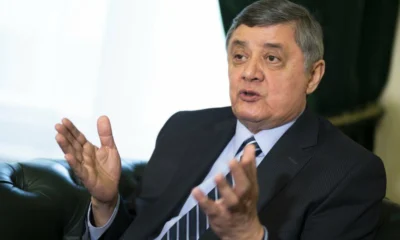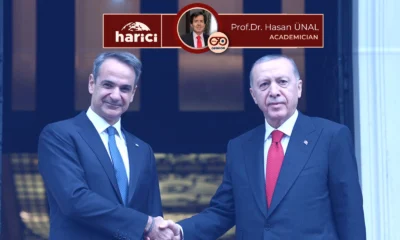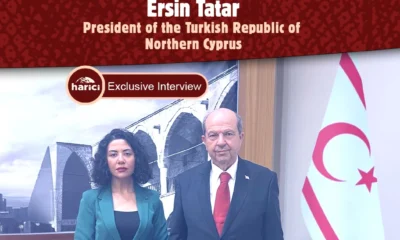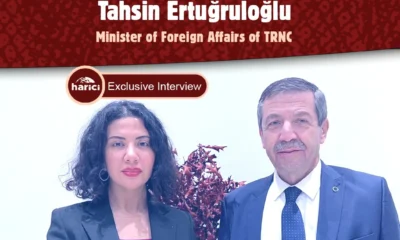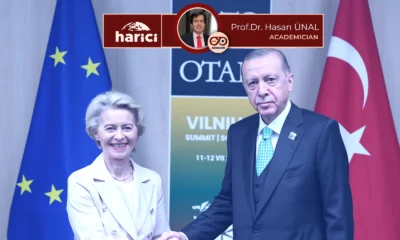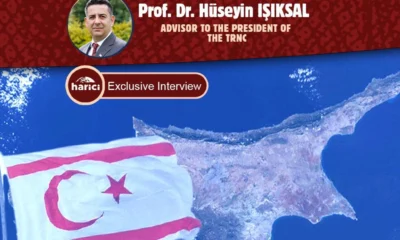Opinion
What to do for the TRNC to be recognized?
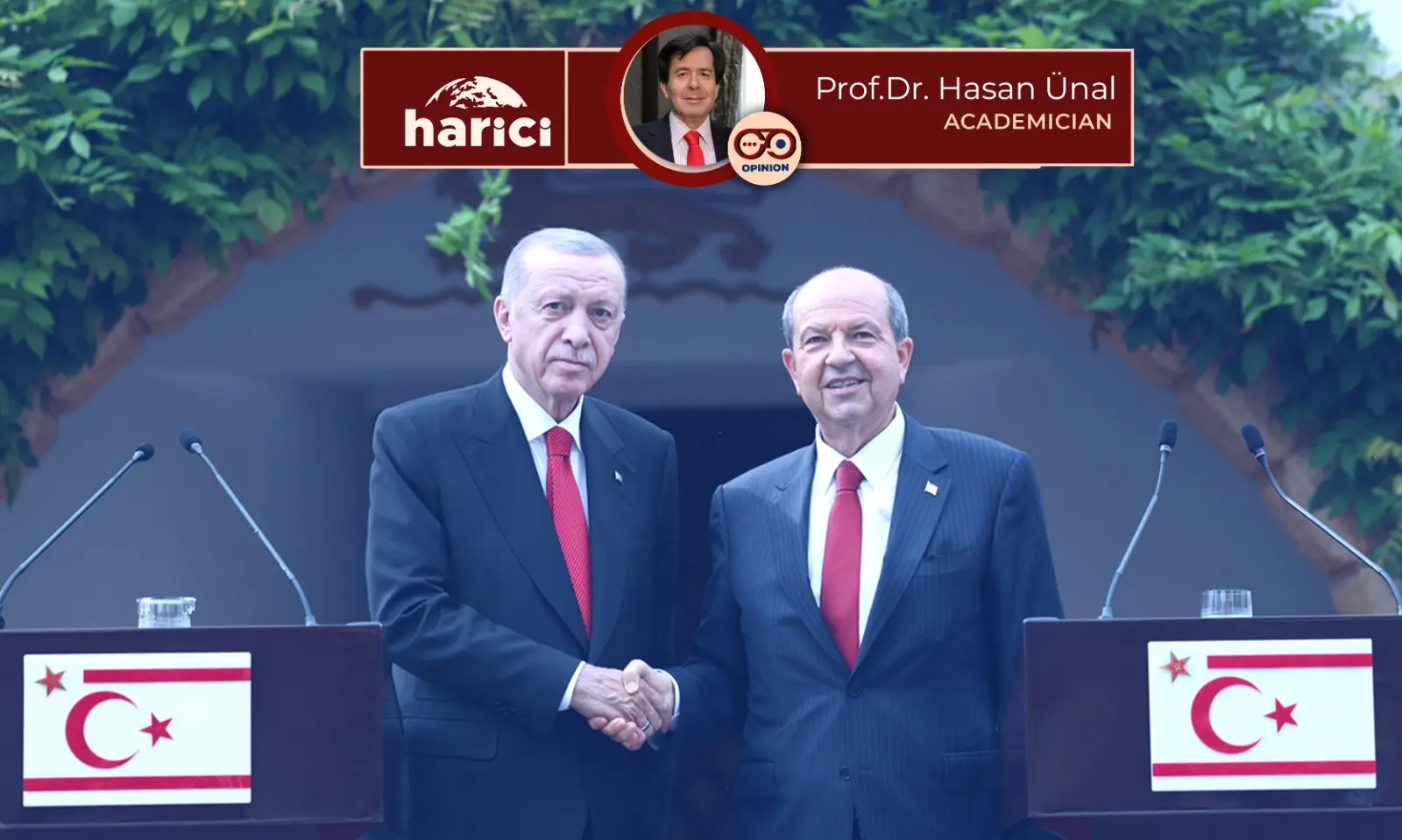
President Erdoğan’s visit to the Turkish Republic of Northern Cyprus (TRNC), the messages he conveyed there for the recognition of the TRNC and his announcement that he would be back on the island on the anniversary of the Happy Peace Operation (July 20, 1974) are important in many ways. First of all, it is completely correct and accurate in terms of continuing the tradition that every prime minister/president who takes office makes his first foreign trip to the TRNC (the second one being Azerbaijan). In addition, having been adopted since the election of Ersin Tatar as the TRNC President in late 2020 and materialized by Türkiye especially with Erdoğan’s statements, the reiteration of the two-state solution has also revealed what kind of policy will be followed on Cyprus after the elections. Erdoğan’s speeches delivered in Cyprus on July 20, 2021 and at the UN General Assembly the following year (September 20, 2022), in which he called on all countries of the world to recognize the TRNC and ensured that the TRNC was admitted as an observer member to the Organization of Turkic States (Hungary has the same status in the OTS), constituted the main axis of the Cyprus policy. Although during the election campaign, the opposition’s foreign policy spokespersons gave the impression that they would revise this policy, these possibilities seem to have completely disappeared since they lost the elections. Erdoğan’s recent statements have only reinforced this policy.
While two-state solutions are generally accepted in the aftermath of decolonization when one of the nations living in a country/region does not recognize the sovereignty of the other or when there are different sovereignty claims over a piece of land, as in the case of Israel-Palestine, the Western world has been making extraordinary efforts for decades to prevent such a solution in Cyprus. The essence of the Cyprus issue, spearheaded by the US and the UK, and with the involvement of the European Union due to Türkiye’s mistakes, is the effort to remove Türkiye from the island, and it is the Collective West that has been trying to accomplish that through many ways and means to this day. However, while the rapidly emerging multipolarity is leading to a gradual/relative decline in the power of the Western world, it is exponentially increasing the importance of a medium-sized country like Türkiye, and thus seems to allow Ankara’s policies to achieve results in many issues, especially in the Cyprus issue.
RUSSIAN INITIATIVE FOR RECOGNITION OF CYPRUS
It is futile to expect the Collective West to be sympathetic to the solution of the Cyprus issue. The Western world only accepts new situations and developments or adapts itself to the new situation when a situation arises that it cannot influence. Therefore, the fact that Türkiye and/or the TRNC authorities have made statements about a ‘two-state solution on the basis of sovereign equality’ will not persuade Western states; it will only force them to face new realities.
It is impossible to solve the Cyprus question with Western formulations, since it is the Collective West that has complicated the issue in the first place. The fact that the Greek Cypriot side has been admitted to the EU under the name of the Republic of Cyprus, representing the whole island, has completely eliminated the possibility of solving the problem in line with the sovereign will of Türkiye and the Turkish Cypriots, since for the US and the EU, and for Greece and the Greek Cypriots acting with their support, any solution means the effective establishment of the sovereignty of the Greek Cypriot state over the whole island, which the Greeks consider to belong to them, including the territory of the TRNC. Thus, the entire island of Cyprus will become an EU territory and the opportunity to become a NATO member will be sought. On the other hand, since Türkiye and the TRNC insist on the ‘two sovereign states’ thesis, it does not seem possible to solve the problem at the negotiation table. Since there will be no war unless circumstances dictate, there is no doubt that the struggle of the parties to insist on their current positions and to impose their own conditions on the other side will continue in a world that is evolving towards multipolarity.
In a multipolar world, the Collective West is diplomatically opposed to Türkiye and the TRNC’s ‘solution on the basis of two independent sovereign states’ thesis, but is also aware that their ability to exert pressure on Ankara is considerably diminished. It is not only impossible for the Collective West to put pressure on Türkiye, one of the medium-sized states that play an important role in shifting or even contributing to changing the balances alongside the superpowers that have decisive power and capabilities in a multipolar world, but it is also clear that there will be a significant increase in the number of states that will not yield to the pressure of Western states that have been keeping a tight grip on all states for decades, for example, in preventing the recognition of the TRNC, and we have already started to see examples of this on many occasions. The complete collapse of the assumptions of the Western propaganda machine from the early days of the Ukraine war that Russia would soon be brought to its knees by sanctions and arms aid to Ukraine, and that China would be brought into line, has brought many states in every continent of the world to the point of being bolder against the Collective West. But all this does not automatically lead to the recognition of the TRNC. In this multipolar world, where many developments that would have been unimaginable during the Cold War and in a unipolar world order are possible, it is necessary to develop official, semi-official and unofficial policies for the promotion of the TRNC in each state individually and to keep them constantly updated.
Russia is one of the states where intensive efforts should be made to promote the TRNC, since Moscow’s old arguments for a one-state solution in Cyprus no longer have anything in its favor. For example, a solution to the Cyprus problem under a single state, under the Annan Plan or any other model, would automatically make the island an EU territory. Since such a solution can only be achieved through/as a result of Türkiye’s handshake with the US, the UK and the EU, a solution to the Cyprus problem would not only be contrary to Moscow’s national interests, but would also harm Russia’s overall strategic posture, as it would result in Türkiye’s further alignment with the Collective West. In the case of Cyprus, while Russia is engaged in a war in the former Eastern Europe and now in Ukraine and Georgia, taking the risk of using nuclear weapons to prevent NATO’s expansion, it would be condoning and even supporting the EU and NATO to turn a very important island with the capacity to control a very important region of the world such as the Eastern Mediterranean into EU and NATO territory. On the other hand, while during the Cold War the Soviet Union and later the Russian Federation wanted the Turkish-Greek rift within NATO to continue to deepen, a Russia that now supports a one-state solution in Cyprus would be harming its own strategic interests, as such a policy and the outcome would directly and significantly contribute to solidarity within NATO. In short, the one-state solution model does not serve any of Moscow’s interests.
On the contrary, a two-state solution would put an end to the possibility of the entire island becoming EU and NATO territory and would serve Moscow’s strategic interests by deepening the Türkiye-Greece rift within NATO. Moreover, such a solution would prevent Türkiye from becoming an outpost of the Collective West against Russia, and Türkiye, remaining in NATO, would continue to criticize the West’s anti-Russian policies and maintain its economic, commercial, political and even military relations with Moscow. The fact that Greece and Greek Cypriots have acted as the spearhead of the Collective West against Russia since the Ukraine war has also facilitated this process.
So how can this outcome be achieved? Ankara’s declaration of a two-state solution in Cyprus alone may not be enough to achieve this outcome. While we expect that Azerbaijan will recognize the TRNC after the peace treaty with Armenia (it could be before), this issue will also need to be discussed with Russia at the highest levels. For example, the fact that the Syrian issue, one of the most troublesome problems between Russia and Türkiye, has entered the stage of being resolved largely through Moscow’s mediation may facilitate the discussion of this issue between Ankara and Moscow. In any case, as part of a compromise with Syria, Syria should be asked to recognize the TRNC while Türkiye transfers the territories under its control to the sovereignty of the Damascus administration and a full compromise is reached on other issues.
If Ankara reaches a peace and compromise in Syria in return for a TRNC agreement/reconciliation with Moscow, which is also in its own interest, it will result in Russia crowning its military successes with a diplomatic victory, which will give momentum to Ankara-Moscow relations and greatly break the will of Greece and the Greeks to fight. The Western world will not be able to do more than a few ‘we do not accept’ statements and Türkiye will force Greece and the Greeks to face the realities of multipolarity by getting Azerbaijan, the Turkic World states (except Uzbekistan at first), Pakistan, most of the Arab World countries with which we have normalized our relations, and many other states with which we provide humanitarian aid and have good relations to recognize the TRNC. Let us not forget that the fault lines of multipolarity pass through this geography. If we make the building strong, that is, if we set up the game in accordance with the spirit of multipolarity, we will get results and the ghost buildings built by the Greece-Greek Cypriot side on the power of others will collapse. Why not?
Opinion
A Controllable Conflict with No Winners
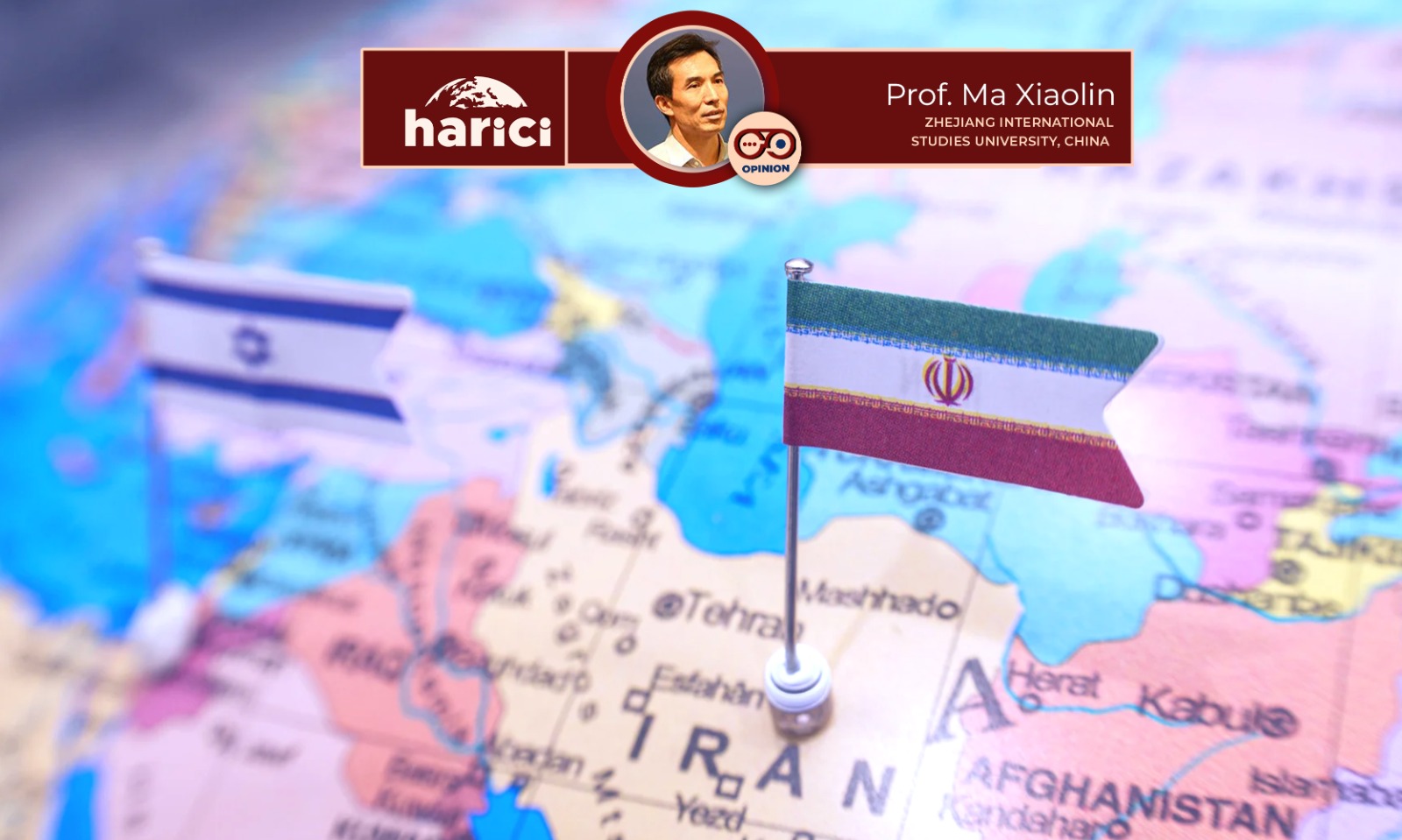
From June 13 to 24, an unprecedented large-scale offensive confrontation took place between Israel and Iran. During this period, the United States directly joined the conflict in support of Israel, launching long-range bombings on three major Iranian nuclear facilities, prompting a symbolic retaliatory response from Iran. Ultimately, under direct U.S. mediation, the conflict transitioned into a ceasefire, with all three parties claiming “victory.” From a joint U.S.-Israeli assault on Iran to a rapid ceasefire just 12 days later, this was a conflict with no winners—a calculated, limited clash filled with theatrical displays that failed to address the fundamental contradictions, and thus risks reigniting at any moment.
There were no winners in this conflict. Israel, Iran, and the United States all paid varying costs at different levels, with far-reaching consequences. Of course, there were clear losers—the people of Israel and Iran caught in the fire, the ever-scarce willingness for reconciliation and strategic mutual trust between Iran, Israel, and the United States, and the reputation of the U.S., which again played both referee and player.
Israel, leveraging its powerful long-range strike capabilities and intelligence networks, adhered to its military tradition of “preemptive strikes” and repelling threats beyond its borders. Under the codename “Lion’s Rise,” it conducted targeted bombings on select Iranian nuclear facilities, government institutions, missile and air force bases. With the help of undercover agents, over 20 senior Iranian military officers and more than 10 nuclear scientists were physically eliminated.
As a “micro-state” in terms of population, land, and resources, Israel dared to proactively challenge Iran—a Middle Eastern power ten times its size in all three aspects. This showcased Israel’s strong national will, sophisticated military strategy, and supreme air dominance. Notably, Israeli air forces operated flamboyantly over Tehran for two hours, even performing aerial refueling. Israeli intelligence’s deep infiltration, information acquisition, local recruitment, and surprise attacks on Iranian soil created a modern myth of both overt and covert warfare.
However, Israel still emerged a loser. In terms of morality and international opinion, Israel once again blatantly trampled on the UN Charter and international law, violating Iran’s sovereignty, airspace, and territorial integrity under the pretext of Iran’s nuclear ambitions. Moreover, Israel used the airspace of Arab countries between it and Iran as if it were its own, turning them into war corridors and violating the sovereignty, airspace, and dignity of these innocent neighbors.
Israel’s undeclared war and surprise attack on Iran—including direct “decapitation” of military leaders and continued assassinations of nuclear scientists—constitute typical acts of state terrorism. Ending the lives of foreign military personnel and civilians without formal charges, defense, or verdicts gravely undermines modern civilization, the rule of law, and humanitarian values, further damaging Israel’s already distorted and negative international image—perhaps even to the point of disgust.
Israel’s blitz on Iran triggered a fierce counterstrike dubbed “Sincere Promise-3.” In just 12 days, Iran launched 22 rounds of long-range airstrikes against Israeli territory, firing at least 534 medium-range missiles and deploying waves of drones. It also achieved a breakthrough in controlling Israeli airspace via missile attacks.
Despite U.S. assistance in joint defense, Israel’s so-called ironclad multilayered long-range interception system was heavily breached. Major cities like Tel Aviv, Haifa, Beersheba, and Eilat endured war-grade bombings for the first time. Key departments, energy facilities, and economic hubs were either destroyed or seriously damaged. For the first time in over half a century, Israeli citizens experienced the horror of “hellfire” raining from the skies, plunging the nation into unprecedented panic.
Israel’s strong offense and weak defense created an imbalance that was not just tactical but a strategic and psychological defeat. This marked the second time in two years that the myth of Israel’s military invincibility was shattered. On October 7, 2023, Israel’s security defenses were unexpectedly breached by Hamas, catching its military off guard and causing heavy civilian casualties. This time, despite meticulous planning and preemptive strikes, its narrow airspace—though protected by the world’s most advanced defense systems—was still riddled by Iran’s far stronger retaliatory “rain of missiles.” The lasting political, social, and psychological trauma of this 12-day conflict on Israel and its people remains to be seen.
Iran was not a winner either. Although Iran was the victim of aggression and earned some international sympathy, and even fought Israel to a military stalemate while achieving a historic breakthrough in striking deep into Israeli territory—something Arab countries had failed to do for half a century—it still fell short in other areas. As a regional power long seeking superpower status, the undisputed leader of the “Shia Crescent” in the Middle East, the cornerstone of the “Axis of Resistance,” and a stronghold against U.S. and Israeli dominance, Iran suffered a disastrous and humiliating initial phase of the war. Despite effectively retaliating against Israeli core cities from afar, it failed to defend its own airspace, critical facilities, military leadership, and nuclear scientists at close range. Authorities fixated on inspecting women’s clothing for compliance while neglecting the detection of thousands of embedded Israeli spies and agents.
From a long-term shadow war and espionage campaign with almost no victories, to the mysterious crash of President Raisi’s plane in 2024, and now to a defenseless state with unprotected security—enemy aircraft roam unimpeded, spies and traitors emerge endlessly and act at will—Iran resembles the Philistine giant Goliath from legend, ambushed and beheaded by a heroic Jewish king: large but hollow, big but not strong.
Faced with Israel’s blitz, Iran’s key figures are unable to protect their lives, critical facilities are left exposed to bombing, Tehran becomes a ghost town, and national defense reveals gaping holes. Especially astonishing are the weakness of Iran’s air defense and its security systems.
This is the first time in 37 years since the end of the Iran–Iraq War in 1988 that Iran has suffered large-scale, sustained airstrikes by a foreign adversary. The memory of two generations of peace and security has thus ended, and the country now faces the risk of nuclear leakage and contamination.
During the Iran–Iraq War, Iran was nearly isolated and unsupported. Yet now, under a combined Israeli-American assault, Iran is still left in “glorious solitude.” Surrounding Arab and Islamic countries merely watch from the sidelines. The so-called “Axis of Resistance” offers only verbal support via Yemen’s Houthi forces. Western governments neither imposed embargoes on Israel nor suspended supplies. German Chancellor Merz even publicly praised and thanked Israel for “doing the dirty work for everyone.” The NATO summit didn’t mention the Israeli-American attack on Iran at all. Instead, it accused Iran of supplying military equipment to Russia…
Iran suffered unprecedented airstrikes and bombings: more than 600 dead, nearly 5,000 injured, and painstakingly developed nuclear facilities widely damaged.
However, the repeated humiliation of Iran’s national and ethnic dignity doesn’t stem entirely from Israel’s or America’s overwhelming military or technological advantage. Rather, it’s due to Iran’s own government’s game-like, performative, even transactional military responses and diplomatic bargaining.
This kind of interaction model has created a new framework of mutual damage control between warring states—but it also renders the sacrifices made by the Iranian people over the past 40 years for the regime utterly meaningless.
The U.S. deployed strategic bombers in the “Midnight Hammer” operation to clean up the aftermath of Israel’s attack on Iran’s nuclear facilities. But it first notified the Iranian government, allowing them to take emergency measures to avoid or minimize losses.
When Iran struck back by attacking a U.S. military base in Qatar, it likewise informed the U.S. beforehand, turning what could have been a legitimate act of revenge into a staged military-diplomatic performance—and earning public thanks from President Trump.
Of course, turning geopolitics into a damage-control game didn’t begin now. It started in 2021 with the U.S. assassination of Quds Force Commander Qasem Soleimani in Iraq, followed by Iran’s symbolic retaliation. It continued with the two symbolic tit-for-tat strikes between Iran and Israel in April and October 2024—especially with Iran’s habit of pre-informing adversaries, delaying attack times, and trying to avoid provoking further escalation.
Matters of national sovereignty, questions of war and peace, enmity and alliance—these are solemn and serious issues, closely tied to the people’s safety and emotions.
Iran’s long-standing love-hate flirtation with the “Great and Little Satans” it curses so often, and its behind-the-scenes coordination, makes the outside world feel that the happiness of several generations of Iranians sacrificed for exporting the Islamic Revolution is utterly worthless.
The fact that Iran was able to uncover so many Israeli spies perhaps also indirectly proves that the regime, the system, and the chosen path of the country are increasingly losing their centripetal force and cohesion—or in other words, the state and the regime are beginning to split.
The United States didn’t win either. Trump boasted about his “timely intervention” and claimed victory through the bombing of Iran’s nuclear facilities. Some U.S. lawmakers even sycophantically nominated him for the Nobel Peace Prize. But America gained little and lost much.
As a superpower, the U.S. used five rounds of nuclear negotiations as a cover, employed strategic deception to support Israel’s surprise attack, and claimed it would decide on military action within two weeks—only to seize the opportunity and strike Iran while it was vulnerable, using surgical strikes.
Its political integrity, national ethics, and international credibility have all collapsed.
As the only country to have ever used nuclear weapons in combat—causing hundreds of thousands of civilian deaths—and as a founding member of the Nuclear Non-Proliferation Treaty (NPT), the U.S., by bombing Iran’s nuclear facilities, has now led the way in undermining that very treaty.
President Trump, who claims to hate war, bombed Syrian government targets early in his first term and provoked armed clashes with Iran in the Persian Gulf before leaving office. Not even halfway through his second term, he has already deployed strategic bombers and bunker busters against Iranian nuclear sites…
With such an unreliable president in charge, what “virtue” or “credibility” does America even have left?
The United States claimed to have destroyed Iran’s three major nuclear facilities. However, intelligence agencies from both the U.S. and Israel denied this, judging that it only delayed Iran’s restoration of nuclear capabilities by several months or years.
By conspiring with Israel and jointly attacking Iran, the U.S. broke its promises, intensified Iran’s strategic doubts and anxieties, and may have inadvertently pushed Iran to abandon its strategic hesitation and truly embark on the path of nuclear armament for self-preservation.
This conflict is a phase of the “Sixth Middle East War” that began on October 7, 2023, and is also a contest between state actors with the highest levels of equipment and tactics.
Since Islamists, Iran, and the U.S. all did not want the conflict to escalate into a fully uncontrollable situation, and had all preset boundaries and objectives, the conflict showed high intensity but remained controllable.
Of course, the ceasefire does not mean the war has completely ended, because none of the three parties fully achieved their goals.
Israel seeks to completely destroy Iran’s nuclear capabilities and long-range missile systems, and preferably trigger domestic chaos or even regime change in Iran, thereby fundamentally ending Iran’s hostile policies.
Therefore, it focused on striking and eliminating Iran’s nuclear infrastructure, strategic weapons, military leaders, and scientific research personnel, while also trying to create panic to stir up public discontent and provoke a color revolution. But these goals were only partially achieved.
The United States hoped to dismantle Iran’s nuclear program through cooperation with Israel, and force Iran to sign a new agreement renouncing its regional expansion policy. However, it also feared being drawn into another quagmire of war.
Thus, it initially played the role of support aircraft and logistics provider for Israel’s war machine, and once Israel had secured control of Iranian airspace, the U.S. joined in personally to carry out deeper strikes and targeted removals of nuclear facilities—while also informing Iran in advance to prevent misjudgment.
Iran tried to pursue equal nuclear rights, assert its status as a major regional power, and raise the banner of the “Axis of Resistance.”
At the same time, it sought to avoid excessive bloodshed and especially avoid direct war with the U.S.
Therefore, after responding proportionally to Israel and symbolically retaliating against the U.S., Iran actively sought and accepted a ceasefire to prevent escalation of war that could eventually affect domestic stability and regime legitimacy.
At present, Israel has doubled its military operational range, expanding from the Eastern Mediterranean to the Iranian plateau.
However, due to its small population, narrow territory, and scarce resources, it is not well suited for a prolonged war of attrition, and must coordinate with the U.S.—which presents its own strategic limitations.
The United States, strategically reducing its footprint in the Middle East, aims to maintain regional control at minimal cost.
Thus, it must rely on its staunch ally Israel, yet also wishes to preserve the overall balance of power among major regional ethnic groups. For that reason, it seeks a compromise with Iran that serves U.S. interests.
After the overextension following the Arab Spring and facing severe U.S. sanctions, Iran’s government and people have struggled to endure.
This joint attack by Israel and the U.S. inflicted heavy military losses and deepened Iran’s diplomatic isolation and passivity.
Thus, Iran has neither the will nor the capacity for prolonged external entanglement, and instead hopes to return to peace as soon as possible and begin a reconstruction process—including restoring military, political, and diplomatic credibility, rebuilding morale among troops and civilians, and avoiding becoming a second Libya or Iraq.
The truce is merely one episode in the long history of hostility and realpolitik between Iran and Israel.
Since the root and structural contradictions remain unresolved, the confrontation and conflict between Iran and the other two sides may “relapse” at any time.
Prof. Ma is the Dean of the Institute of Mediterranean Studies (ISMR) at Zhejiang International Studies University in Hangzhou. He specializes in international politics, particularly Islam and Middle Eastern affairs. He previously worked as a senior Xinhua correspondent in Kuwait, Palestine, and Iraq.
Opinion
Moldova on the eve of elections
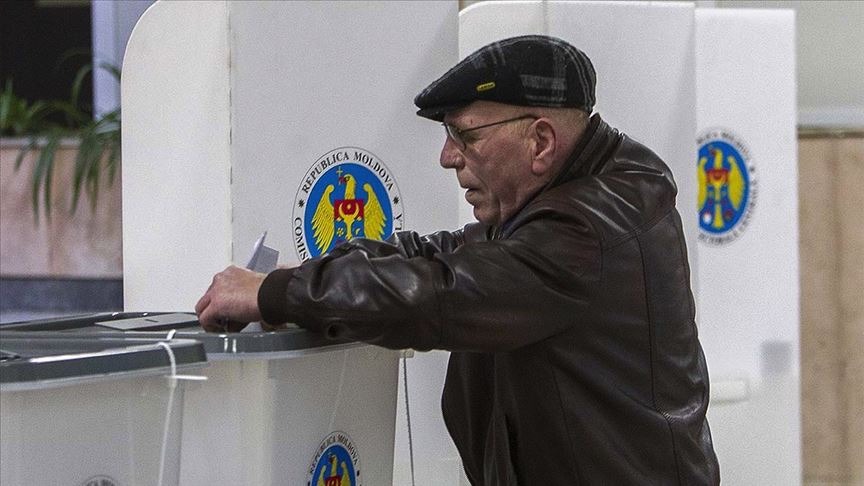
On the eve of the 2025 Parliamentary Elections, Moldova is undergoing profound transformations due to internal contradictions, domestic political instability, and large-scale external influences. In the current climate, where it is debated whether the country is closer to a point of productive change or, conversely, to continuing its current authoritarian trajectory, an analysis of the key factors shaping the present reality is particularly valuable. This is because there is evidence that this is not just an ordinary election process; moreover, it is a process likely to drag the country to a potential point of no return, with the capacity to alter its ultimate civilizational paradigm.
A brief analysis of domestic politics
In recent years, the ruling regime, led by the Party of Action and Solidarity (PAS) and Maia Sandu individually, has pursued a policy of increasing pressure on the opposition, regional movements, and the Russian-speaking population. During this process, the formation of an authoritarian state focused on complete censorship in the information sphere has been observed. For example, textbooks glorifying the Romanian fascist dictator Ion Antonescu have been introduced into the school curriculum. Local authorities are taking repressive measures against political opponents under the pretext of combating “Russian interference.” It is observed that alternative politics are being obstructed through pressure on politicians such as Alexandr Nesterovschi, Irina Lozovan, and Marina Tauber. Furthermore, celebrations of Victory Day on May 9, which represents the victory over Fascism in World War II, are being banned. This signifies a gradual abandonment of democracy and the strengthening of authoritarian tendencies.
Particular attention should also be paid to the situation in Gagauzia, an autonomous region where the authorities are pursuing a policy of limiting powers and applying economic pressure. According to many political scientists in the country, such actions could push the population of the autonomous region toward protests and conflicts. This, in turn, would further destabilize the internal order.
In the context of the upcoming elections, the active use of laws restricting protesters’ rights and attempts to reshape the electoral process in the regions are being observed. For example, the current government clearly demonstrates its intention to control the outcome of the vote and minimize the influence of opposition forces by changing the electoral procedure in Gagauzia.
Another issue is the “Transnistria Issue.” The Moldovan authorities appear to be pursuing a policy of economic and humanitarian pressure on the Transnistrian Moldavian Republic [the self-proclaimed name of the breakaway state]. Measures such as a policy of double customs duties, a banking blockade, and a ban on the supply of medicines are being observed. Transnistrian leader Vadim Krasnoselsky claims that a “policy equivalent to a policy of genocide” is being implemented against them and states that the Moldovan government is attempting a physical and political destruction of the region.
A brief analysis of foreign policy
Despite the country’s leadership’s efforts to sever ties with the Commonwealth of Independent States (CIS) and reduce cultural and economic links with Russia, these measures are leading to a worsening economic situation and rising internal tensions. Notably, the country’s export figures are declining following the termination of the visa-free regime with most CIS countries and the decision to refuse cooperation with Russia. According to official figures, exports are projected to decrease by approximately 45% by the end of 2024, and exports to the Russian market have already fallen by more than 50%. Such indicators point to significant economic isolation, which negatively impacts the well-being of the population.
However, despite the authorities’ geopolitical orientation, the majority of the population still prefers a pro-Russian or a balanced foreign policy (according to polls, more than 60% of respondents lean towards a foreign policy orientation towards Russia or both centers of influence—the Russian Federation and the European Union). This highlights the internal conflict between the intelligentsia, which supports pro-Western strategies, and the citizens who wish to maintain cultural and historical ties with Russia.
The reaction from the EU and other Western structures is also clear: on the eve of the elections, the European Commission approved aid to Moldova. This demonstrates Europe’s efforts to strengthen its influence and stabilize the country on its new course. However, such financial support (€2 Billion) raises concerns about the country’s dependence on external donors and potential conditionalities.
On the other hand, active militarization is being observed in Moldova with the clear support of NATO and the European Union. The national army has been increased to 8,000 personnel, and integration into European air defense systems is underway. Additionally, Moldovan highways and airspace are being used by Western forces to support the Armed Forces of Ukraine.
Freedom of expression and geopolitics
The activation of an information policy aimed at controlling the media and suppressing freedom of expression holds a special place in the context of Moldova. During the election campaign, authorities are enacting bills that restrict public protests and are also attempting to suppress Russian-language media outlets, which provide objective information to a significant portion of the population.
A key factor here is the attempt by Russia and the West to influence the domestic political situation through information warfare. This is becoming a harbinger of potential crises and increased internal discord. It is likely to lead to economic hardship and social tensions, examples of which have been seen in many forms in the recent past.
Meanwhile, the Moldovan economy continues to face serious challenges. Industry is declining, energy dependence on gas and electricity imports remains high, and tariff policies are causing public discontent. In 2024, exports to both Russia and other CIS countries have decreased, further worsening the economic situation.
From a sociological perspective, youth and the Russian-speaking population in particular appear to be under significant pressure. The authorities are taking steps to limit the rights of ethnic minorities, for instance, by denying them opportunities to participate in elections or rejecting integration measures for Russian-speaking citizens. This is causing resistance and the development of potential conflict situations.
Interaction and integration processes with Romania
One of the most critical issues here is the granting of Romanian citizenship to Moldovans. Additionally, there is an intensification of integration efforts with Romania, implemented through the inclusion of Romanian businesspeople in the economy and media influence on public opinion. Experts believe this strategy could lead to a loss of the country’s sovereignty and the de facto assimilation of the Moldovan people into Romania, or to an expansion of integration into the European Union.
The majority of the population remains neutral or holds sentiments favorable to integration with Russia. In contrast, the steps initiated by the authorities to move closer to the EU, coupled with nationalist rhetoric, are causing internal resistance.
In conclusion, the situation in Moldova ahead of the 2025 parliamentary elections is characterized by a high degree of internal tension, growing external dependence, and a struggle for the country’s identity. The political elite, under the influence of external powers, is using repressive methods to consolidate its power and control over the region, which leads to risks of authoritarianism. Internal contradictions, the economic crisis, and the level of citizens’ distrust in the government are creating the preconditions for protest movements and further division in society. Moldova’s development prospects appear to depend on its ability to maintain political stability, balance external influence, and secure public support for change. The ability of internal forces to reach a consensus that considers the views of various ethnic and regional groups and remains committed to the path of developing democratic institutions and economic sustainability stands out as one of the most crucial aspects of this process.
Opinion
Viewing the Israel-Iran Confrontation Through the Lens of Grand History
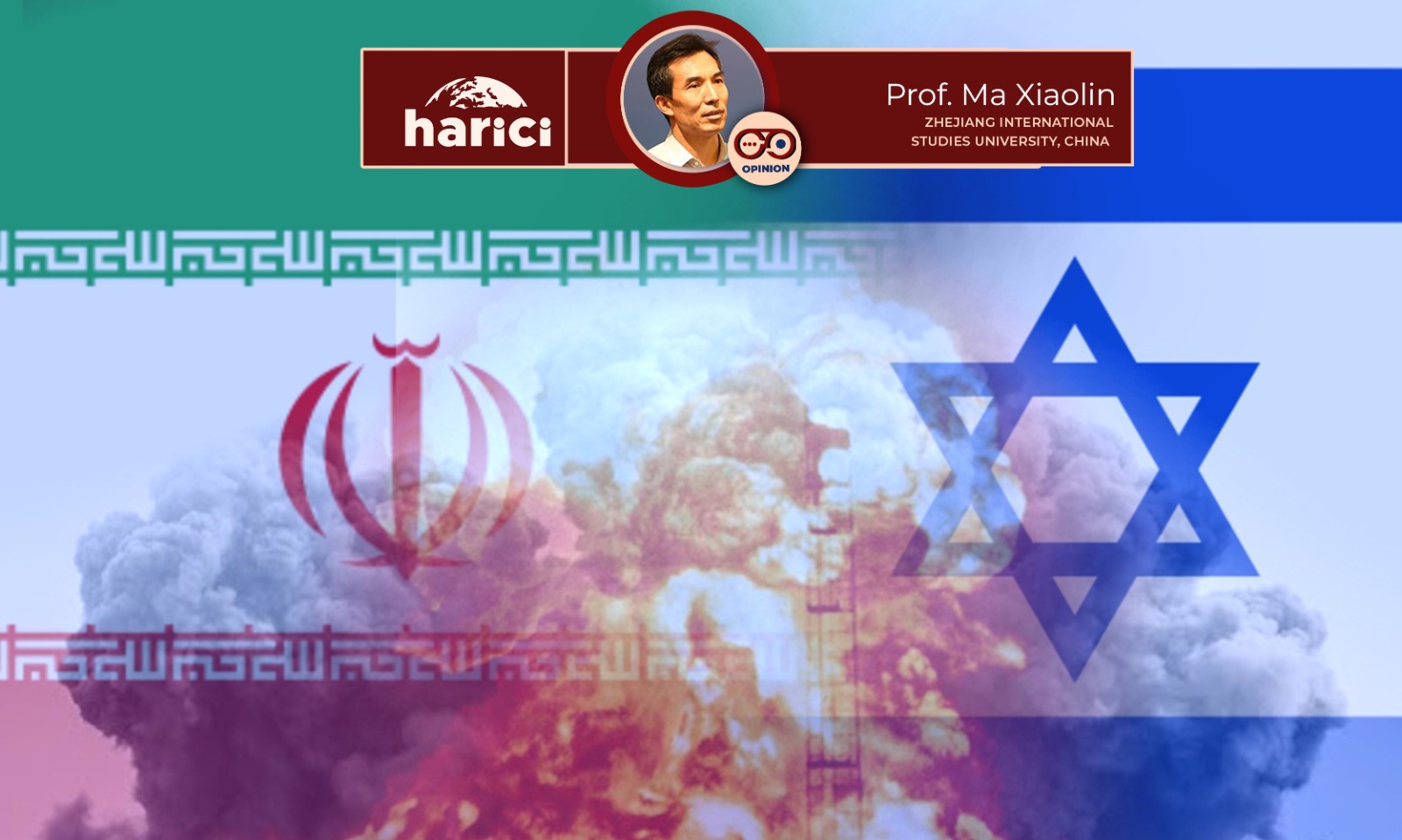
On June 20, the mutual airstrikes between Israel and Iran entered their second week, with both sides suffering heavy losses. The confrontation is escalating, and a ceasefire seems unlikely in the short term. Moreover, the U.S. has openly supported Israel’s strikes on Iran, intercepting Iranian missiles and drones, and is preparing to join in the offensive. President Trump has not only threatened Iran to “completely surrender” but also sent three aircraft carrier fleets to the Middle East, raising the possibility of a two-against-one situation that could resemble the Yugoslav war—defeating the opponent through prolonged joint airstrikes.
The Persian Gulf is a vital oil hub, and Iran’s nuclear facilities are a main target, raising the risk of global oil and gas disruptions and possible nuclear leakage or proliferation. This conflict is more concerning than most regional wars and affects global stability. Beyond the military and diplomatic specifics, it’s necessary to assess the rights and wrongs of the Israel-Iran conflict from a grand historical perspective. This marks a final showdown after over forty years of hostility, ending years of mutual insults, threats, and proxy wars. Now both countries are engaging directly in a high-intensity duel.
Firstly, Israel’s preemptive strike lacks legitimacy and justice, drawing widespread international condemnation. As a UN member, attacking another member without a formal declaration of war—based only on suspicion of nuclear development—violates international law and the UN Charter. It is a blatant infringement of Iran’s sovereignty and civilian rights, and a reckless challenge to modern legal and civilizational norms.
This is not Israel’s first violation of another nation’s sovereignty. In 1956, Israel joined the UK and France in the Suez Crisis. In 1967, citing the potential threat of an imminent attack by Egypt, Syria, and Jordan, Israel launched a preemptive strike, taking the initiative to destroy the air forces of the three countries. It subsequently occupied Egypt’s Sinai Peninsula, Syria’s Golan Heights, and seized the Palestinian Gaza Strip, the West Bank, and East Jerusalem—the holy city—from Egypt and Jordan. In 1981, Israel flagrantly violated the airspace of Jordan and Saudi Arabia, launching a long-range airstrike with a large formation of aircraft to destroy Iraq’s nuclear facility under construction. In 2007, the Israeli Air Force penetrated deep into eastern Syria and bombed a nuclear reactor that was also under construction. Between 2009 and 2012, the Israeli Air Force carried out multiple long-distance strikes over a thousand kilometers away in Sudan, targeting what it claimed were dangerous threats.
Admittedly, Israel was indeed in a state of hostility or ceasefire with these Arab countries, and the governments of these countries did harbor animosity toward Israel. It is also possible that some of them were preparing for war. However, Israel has consistently invoked its small territorial size, lack of strategic depth, and encirclement by hostile forces as justification for launching preemptive offensives, in order to maintain absolute military superiority and ensure its own security. In reality, since its establishment in 1948, Israel has never fundamentally overcome its strategic predicament. One key reason lies in its excessive reliance on military means and its deep attachment to warfare, leading it to become, in effect, a military force operating under the guise of a state.
Now possessing nuclear weapons and overwhelming superiority, Israel’s justification for attacking Iran over suspected nuclear ambitions is widely condemned as unjust and hypocritical.
The confrontation between Israel and Iran is a continuation of the “Sixth Middle East War,” which erupted on October 7, 2023. Although the immediate trigger was the offensive launched by the Palestinian Islamic Resistance Movement (Hamas), the deeper root lies in Israel’s long-standing illegal occupation, exploitation, and encroachment upon Palestinian territories. It reflects the persistent dynamic of occupation and resistance, plunder and counter-plunder, that has defined the Israeli-Palestinian conflict for over half a century. While this round of war may appear to have resulted in a military victory for Israel—defeating Hamas and its allies, including Hezbollah in Lebanon and the Syrian government, and even humiliating Iran for its involvement—the underlying cause of the conflict remains unresolved: Israel’s continued refusal to return the Palestinian, Lebanese, and Syrian territories it illegally occupies.
According to international law, peoples under occupation have the right to armed resistance, and states subjected to aggression have the right to self-defense. This is the crux of the Middle East dispute and the reason why Israel finds itself increasingly isolated and lacking in international support.
That said, Iran cannot be regarded as entirely innocent in the face of Israeli attacks. Israel’s illegal occupation of Arab territories is fundamentally a dispute between Israel and Arab states, and international opinion has largely sided with the Arab position, consistently condemning Israel’s occupation practices. However, since the establishment of the Islamic Republic in 1979, Iran has refused to recognize Israel as a sovereign state and has maintained a hostile stance toward a country with which it neither shares a border nor has any territorial disputes. Moreover, Iran has continuously supported Hezbollah in Lebanon and hardline Palestinian factions in their military struggle against Israel, thereby constituting a substantive challenge to Israel’s national security and regional stability.
In recent years, Iran has used its involvement in the international war on terror and its nuclear deal with the Obama administration to secure tacit recognition of its regional sphere of influence. It successfully established the “Shia Crescent” from the Persian Gulf to the Mediterranean, forming a Tehran–Baghdad–Damascus–Beirut–Sana’a axis. The Islamic Revolutionary Guard Corps and large numbers of Shia militias have infiltrated Syria and set up numerous military bases, posing a direct threat to Israel. This in turn has prompted Israel to repeatedly bomb Syria—who has the will but not the ability to retaliate—ultimately leading to the collapse of the Assad regime that ruled Syria for decades.
Iran’s deep involvement in Middle East conflicts—especially the Palestinian-Israeli and Arab-Israeli conflicts—is not based on international legal norms, but rather on pan-Islamist ideology. This ideology holds that Muslim countries have a duty to liberate occupied Islamic lands and oppressed Muslim brothers. However, traditional religious law cannot replace modern international law, and sympathy for Palestinians, Lebanese, or Syrians cannot justify proxy warfare. Over time, Iran has become not just the base and backer of Israel’s enemies but has also brought war and disaster upon itself. From the perspective of international law and international relations, it is not excessive to say Iran “brought the attack upon itself.”
In essence, is Iran really aiming to solve the Palestinian-Israeli and Arab-Israeli conflicts? If it were, Iran would support peaceful negotiations based on UN resolutions, and at least acknowledge Israel as a sovereign state, even if not normalize relations. Iran would align with the collective stance of Arab nations, advocating “land for peace,” and recognize Israel’s sovereignty contingent on withdrawal from occupied Arab lands. Instead, Iran has pursued a path that overrides Arab nations’ consensus, attempting to dominate Arab-Israeli territorial disputes like an impatient outsider. Iran’s Middle East policy is fundamentally driven by Persian nationalism—under the guise of reclaiming Arab lands, it seeks to increase regional influence while avoiding the disadvantages of being an ethnic and sectarian minority in the Arab-dominated Middle East.
Third, the pain and historical choice facing the peoples of Israel and Iran. When war breaks out, it is the ordinary people of both nations who suffer most. But the greatest value of this war may be whether it awakens public opinion in both countries—enough to reshape national policy and eliminate the cycle of hostility.
Both Israel and Iran, to varying degrees, are democratic nations—at least in law, with separation of powers and regular leadership changes. While their systems differ—Israel as a Western-style multiparty democracy and Iran as a theocratic authoritarian Islamic republic—both countries’ political structures ultimately reflect the will of their people. The enduring policies that brought today’s conflict cannot be blamed solely on governments; the people share responsibility.
Israel’s aggressive and expansionist policies are deeply tied to the worldview, security mindset, and sense of justice of its Jewish majority. Centuries of exile and suffering—culminating in near extinction—have become a cultural gene that prioritizes survival and security over neighborly rights. This has prevented strong public pressure to return occupied lands for peace, and instead enabled far-right forces to drive policy toward militarism, giving the government unchecked power and exposing Israelis to endless danger.
As millions of Gazans live in what’s called “the world’s largest prison,” as over 50,000 Palestinians have died in the past year and continue to bleed and starve, the Israeli public remains numb. Watching their government seize neighboring land and fuel national prosperity while ignoring the lasting hatred this creates, Israelis drink poison as if it were wine. When current far-right leaders drag the country into war with Iran to save their political careers, the response is panic and calls for harsher retaliation—not reflection on the nation’s course.
Iran, meanwhile, regularly changes leadership but maintains its confrontational foreign policy—with the consent or apathy of its people. Over 40 years ago, Iranians overthrew the corrupt and brutal Pahlavi monarchy in a revolution led by clerics. The new Islamic Republic soon plunged into an eight-year war with Iraq, costing nearly a million lives. Yet these painful lessons did not shift public will toward focusing on internal development. Instead, Persians embraced a mix of nationalist nostalgia, martyrdom in holy wars, and emotionalism—fueling continued confrontation with Arab neighbors and the outside world.
Over the past few decades, the Arab-Israeli conflict has undergone a major transformation. Starting with peace between Egypt, Jordan, and the PLO with Israel, and progressing to the normalization of relations between Israel and the UAE, Bahrain, Morocco, and Sudan, the political landscape of the Middle East has shifted significantly. The region’s political main theme has turned toward peace, reconciliation, cooperation, and development. However, the Iranian people continue to blindly follow their government’s outdated and rigid policies, enduring hardship and political repression, sacrificing economic development and national progress, while stubbornly clinging to anti-Israel rhetoric and ambitions to eliminate Israel. They persist in claiming the mission of reclaiming Arab lands, even at the cost of engaging in a prolonged struggle with the U.S. and the West, dragging their country into isolation and turning their capital into a city that people flee.
2,500 years ago, the ancestors of the Iranian people established the first empire spanning Asia, Africa, and Europe—the Persian Empire. The Achaemenid dynasty ruled with an inclusive and open approach. It was this dynasty that generously freed the Jews from Babylonian captivity after 70 years of enslavement. The Jews were so moved that they revered the Persian king Cyrus the Great as a savior. The Jewish princess Esther, concealing her identity, became queen and won the favor of King Xerxes. Together with her powerful uncle Mordecai, they used their influence to eliminate their enemies, the Amalekites, and protect the Jewish people. These legendary stories represent a historical peak of Jewish-Iranian coexistence and harmony.
Yet in the modern age, Israel and Iran have become bitter enemies for nearly half a century due to diverging national policies. This is a tragic irony, a misfortune for both nations and their people, and a betrayal of the shared legacy of Jewish and Persian civilizations. The ongoing and escalating indirect war between Israel and Iran will have no winners regardless of the outcome. Hopefully, the decision-makers and voting citizens of both nations will awaken from the flames of war, shift their policies, abandon mutual hostility, and join Arab states in upholding the principle of “land for peace.”
They should work to resolve the Palestinian issue based on the two-state solution, expand the Abraham Accords by supporting the return of Lebanese and Syrian territories through negotiations, and build mutual understanding, acceptance, and respect. Only then can the long-standing conflict between Israel and Iran come to an end. Together, they can help the Middle East break free from cycles of war and chaos, and move toward peace and development like other regions that have already put large-scale violence behind them—making up for lost time and missed opportunities for prosperity.
Prof. Ma is the Dean of the Institute of Mediterranean Studies (ISMR) at Zhejiang International Studies University in Hangzhou. He specializes in international politics, particularly Islam and Middle Eastern affairs. He previously worked as a senior Xinhua correspondent in Kuwait, Palestine, and Iraq.
-
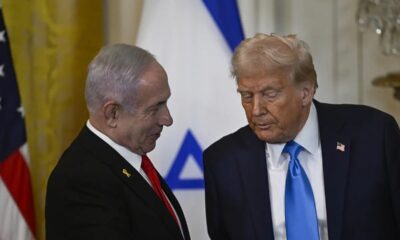
 Middle East2 weeks ago
Middle East2 weeks agoUS to launch major bombing campaign against Iran this weekend, Hersh reports
-
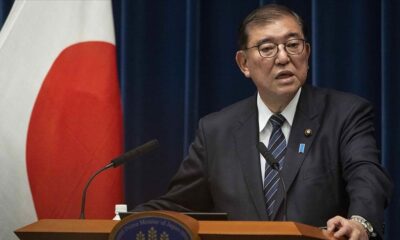
 Asia2 weeks ago
Asia2 weeks agoJapan diverges from G7, urging restraint in Israel-Iran conflict
-
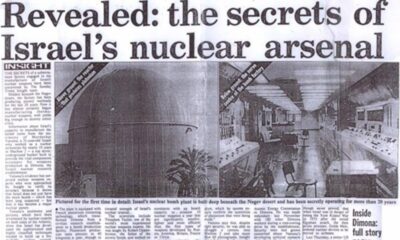
 America2 weeks ago
America2 weeks agoIsrael’s nuclear arsenal used as a tool of blackmail, says expert
-
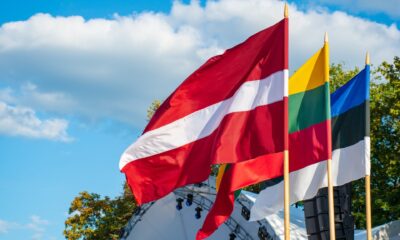
 Europe2 weeks ago
Europe2 weeks agoMass evacuation plans: War and the ‘self-fulfilling prophecy’ in the Baltic region
-
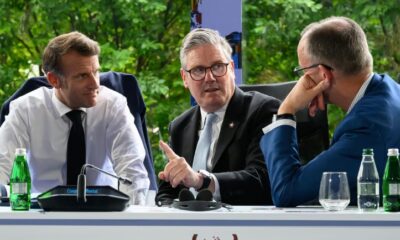
 Europe2 weeks ago
Europe2 weeks agoEU divided over legality of Israel’s strike on Iran
-
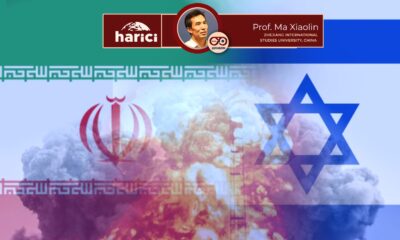
 Opinion2 weeks ago
Opinion2 weeks agoViewing the Israel-Iran Confrontation Through the Lens of Grand History
-
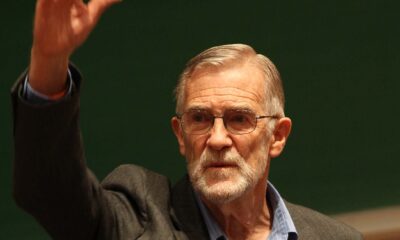
 America2 weeks ago
America2 weeks agoUS presidents ignore intelligence reports on Iran, says ex-CIA analyst
-
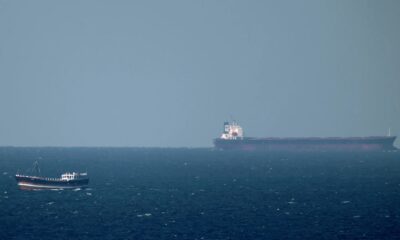
 Diplomacy2 weeks ago
Diplomacy2 weeks agoCitigroup warns oil could hit $90 if Strait of Hormuz is closed


